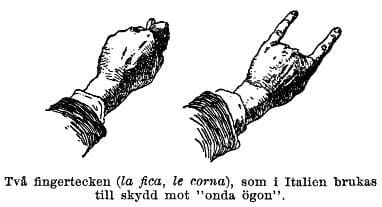To have the horn

HORNY, adj. I wanted to know if I could use “horny,” as in “lustful,” in my current novel draft without it being an anachronism, and I am thrilled to report that Green’s Dictionary of Slang has the first recorded instance of “horny” as “sexually eager” in 1826 in US English. My draft is set in 1824, and there is nothing anyone can do to stop me from using this word. This newsletter now counts as premeditation. When the Historical Accuracy agents come to handcuff me and haul me away, know that I have no regrets.
(My draft is also set in France, in a world with magic, so you could make the argument that I don’t need to care about the historical origins of any English words, but as this newsletter makes clear, that is not how I live my life.)
The 1826 instance cited in Green’s Dictionary is about “feeling horny,” which is pretty much in line with contemporary usage. There’s also an 1842 instance that we should all enjoy: “The following ladies honored the ground with their presence: Horny Anny, Swelled Head jenny, Black Till, Betsy Hicks, Lizy nash, Nancy Tucker, Big-headed Mary and old Scupper-mouth Virginia.” These don’t seem like very flattering nicknames! (Alternatively: tag urself.)
The connection between horniness and horns is, I think, a pretty simple shape-based matching exercise. It’s old, too. I am delighted to report that Online Etymology Dictionary says “horny” might derive from an eighteenth-century expression for being sexually aroused, “to have the horn,” which I vote we bring back.
Even earlier than “to have the horn,” there’s the association between being a cuckold (a man whose wife is banging somebody else, and a word that has been given a weird new life thanks to horrible fascists on the internet, but let’s save that for some other newsletter) and growing horns on one’s forehead. This might be associated with the myth of the Minotaur, a monstrous man-bull hybrid born from the union of a sacred bull and Pasiphae, wife of Minos, the king who would be the cuckold in this situation. But if the Minotaur myth is the origin of cuckolds growing horns, I would expect at least a few historical sources to mention it, and I haven’t found any. I did find out that while ancient and contemporary depictions of the Minotaur usually show the body of a man and the head of a bull, medieval Minotaurs had more of a centaur sitch going on, so we can all think about which one is worse. (Or which one is hornier?)
But anyway, this horns-on-forehead image is either the origin or the consequence of an insulting hand gesture where you make a fist with your pinky and index finger raised, often called the sign of the horns 🤘 In Italy, making the gesture behind a man’s back can mean that his wife is cheating on him. Former Italian Prime Minister and criminal clown Silvio Berlusconi helpfully demonstrates in this photo from 2002 (he’s making the gesture behind Spanish foreign minister Josep Piqué).

You might associate this hand gesture with rock or heavy metal or “devil horns,” because Ronnie James Dio of Black Sabbath made it at concerts and fans spread it around. Dio said in interviews that he wanted to make a hand gesture at concerts, because Ozzy Osbourne, the previous frontman of Black Sabbath, had always made a peace sign. In order not to copy Ozzy, Dio adopted a gesture that his Italian grandmother often made—not to call men cuckolds, but to ward off the evil eye. I love so much that this “rock on” or “devil horns” gesture can be traced back to Dio’s Italian grandma.

Image of Ronnie James Dio from this Guardian obituary
But this is a pretty confusing set of meanings for a single hand gesture to have. Cuckoldry and protection? Let’s keep going with “cuckoldry” for now and I’ll come back to “protection” momentarily.
Nobody seems to have a satisfying explanation for the folklore that a man’s wife sleeping with another man will cause that man to grow horns on his forehead, or why cuckoldry would be associated with horns in general. As I said, the connection with the Minotaur myth remains a big ol’ maybe. There’s also the idea that a bull cannot see its own horns, that is to say, the guy getting cheated on doesn’t know it. And there’s the simple a-horn-is-shaped-like-a-dick comparison, and when you make the sign of the horns, there are two of them. So maybe that’s it? Two dicks? And they’re on your forehead (or behind your back) so you can’t see them and it’s embarrassing? I don’t know! But French literature is nothing but cuckoldry horn jokes (medieval fabliaux, Sorel, Molière…), and the idea shows up in Shakespeare (“horn-mad”). It’s old, and the Online Etymology Dictionary says “perhaps as old as ancient Greece.”
The other idea—horns as symbols of fertility and sexual strength and good luck and protection—is also as old as ancient Greece. In the Minotaur myth, the sacred bull is originally intended to be an offering to the gods. But I’m mostly going to talk about ancient Rome right now, because that’s how we get our most direct connection to Ronnie James Dio’s Italian grandma and her signs against the evil eye, and she’s my favorite character in this whole affair.
What is the evil eye? I am grateful to a classicist friend who generously answered a lot of questions while I was writing this newsletter, and she sent me some resources. Here is a succinct explanation given by David Wray in Catullus and the Poetics of Roman Manhood:
Latin invidia, of course, means both “envy” and “the evil eye.” It means both, arguably, because the two are precisely the same thing. The ideology of the evil eye, a “spiritual construct” of the greatest antiquity and nearly pan-Mediterranean pervasiveness, gives a magical force, metaphorically and metonymically, to what is at the same time a social inevitability: if I overstep communal norms in a way that draws attention, or if someone merely looks askance at my excessive happiness and good fortune, I can expect to suffer from it. (143-4)
When Wray says “pan-Mediterranean,” he means it. The evil eye is alllllll over southern Europe, northern Africa, and the Middle East—still today. But its roots are old. In Georg Luck’s Arcana Mundi: Magic and the Occult in the Greek and Roman Worlds, Luck writes “For the ancients, being jealous of another person’s good fortune was at the root of black magic” (19). Maybe in a gods-strike-you-down way and maybe a wicked-tongues-curse-you way; it’s bad news regardless. (Related to all this evil-eye discussion, this newsletter has previously covered the feeling that you shouldn’t go around carelessly talking about how great things are or will be, because then you’ll jinx yourself.)
You protect yourself from the evil eye by (1) not being arrogant (2) not showing off your good fortune or anything that is dear to you, to the point that “if someone praises the beauty of your baby, you must spit on it to pretend that it is worthless to you” (Luck 19) and (3) wearing protective amulets. Sometimes these amulets look like the evil eye—you have probably seen contemporary versions, and if not, here’s the relevant emoji 🧿—and sometimes they look like an open hand, which was a defensive gesture against the evil eye. Middle Eastern, North African, Muslim, or Jewish readers might recognize that as a description of the hamsa.
So now we’re back on the subject of protective gestures, like Dio’s grandma used to make. It sure would wrap things up neatly if I could tell you that there are also protective amulets shaped like horns.
Look! Literal horn amulets… and a “sign of the horns” hand gesture amulet.

I absolutely do not have permission to use this image, which I screenshotted from a PDF of a 1968 issue of the academic journal Folklore—the article is “The Evil Eye and Protective Cattle Horns in Malta” by G. Zammit-Maempel, and the amulets are listed as being part of G.’s personal collection—but the Historical Accuracy agents are already coming to get me for my prose crimes, so I have nothing to lose now.
We’ve detoured from ancient Rome to mid-20th-century Malta, but we’re still in the Mediterranean and people are still trying to protect themselves from the evil eye. The Maltese word for horns is “qrun,” because Maltese is a Semitic language that split off from North African Arabic about a thousand years ago and now has common ground with both Arabic and Sicilian, which is so cool. But anyway what’s important here is that just like in other Mediterranean cultures, horns symbolize both protection and cuckoldry. Maltese farmers wear protective amulets, but they also like to put a set of actual cattle horns somewhere near the entrance to their farms. And yes, size matters:
The chief function of the horns is to strike the eye of the stranger (and in this way neutralize his evil power) before he has had the time to cast his glance on the animals in sight. Hence the importance of having conspicuous, attractive, large-size and asymmetrical horns prominently displayed. (Zammit-Maempel 6)
The Maltese farmers interviewed in the article confirm that the sign of the horns is a little bit rude, given its sexual connotations, but it’s much less rude than the other gesture they make to protect themselves from the evil eye, which is to fondle their genitals. Just in case you were wondering how closely intertwined horn imagery was with dick imagery: real fuckin close.
In fact, it’s way easier to find horn examples later in history, after Christianity takes over Europe, because before Christianity, nobody felt the need for horn metaphors. Ancient Romans were horny on main.

Here is a fascinus, an ancient Roman protective amulet, photo courtesy of the same classicist friend I mentioned above, from the book Roman Sex, 100 B.C. - A.D. 250 by John R. Clarke.
Fascinus is also the name of a Roman deity. Our word “fascinate” comes from Latin “fascinare,” to enchant, and my friend sent me this: “from the glossary in [Roman Sex]: "fascinum, -a from the word fas ("favorable"), a talisman of fertility and prosperity that could ward off evil spirits. It usually took the form of the erect and huge penis, usually called the phallus."
You can’t be too careful, so Romans put penises on everything (even other penises, as you can see above). Here’s Pliny the Elder talking about who Fascinus protects:
…upon the entrance of a stranger, or when a person looks at an infant while asleep, it is usual for the nurse to spit three times upon the ground; and this, although infants are under the especial guardianship of the god Fascinus, the protector, not of infants only, but of generals as well, and a divinity whose worship is entrusted to the Vestal virgins, and forms part of the Roman rites. It is the image of this divinity that is attached beneath the triumphant car of the victorious general, protecting him, like some attendant physician, against the effects of envy…
Three things about this passage, real quick:
- I really like that the god Fascinus was like “You know what two categories of people most need my protection? My especial guardianship? Babies and generals. They got a lot in common, babies and generals.”
- This excerpt immediately follows Pliny talking about how touching spit to your eye can cure numbness, and the spitting-on-the-ground thing is not the first reference to spitting-as-protection-against-the-evil-eye in this newsletter, and spitting is sort of similar to ejaculating, which… Is that why dicks are protective? Shit, if I start talking about the expression “spit in your eye” we’ll need a whole other newsletter.
- “It is the image of this divinity that is attached beneath the triumphant car” = ANCIENT ROMAN TRUCK NUTS
So this newsletter has been, like ancient Roman culture, very phallocentric—horny—but I just want to note that Italians also make a protective (and mildly obscene) hand gesture called “the fig,” pictured below, that is reminiscent of a vulva. “Figa” or “fica” in modern Italian is slang for “pussy.”

I don’t know why the caption is in Swedish but I like it. This image is from Wikipedia.
So any flavor of sexual energy can protect you from the evil eye. Imagine an alternate universe where Dio’s grandma prefers the fig gesture to the sign of the horns. Would the fig have its own emoji? Would we all be shitposting about being figgy on main?
Sorry for missing last week’s newsletter! I sorta forgot what day it was because I got caught up in trying to compose the world’s most beautiful final exam for intermediate French, a goal I certainly did not achieve, and one that my students would likely not have appreciated even if I had.
So over the past two weeks, I didn’t read any Capital-R Romance French literature that wasn’t in our textbooks, but I did, of course, read some small-r romance.
When Frankie Meets Johnny (gay m/bi m, both cis, contemporary, novella) by Xio Axelrod. This was super sweet and made me intrigued to read more of Axelrod’s work—it was satisfying as a piece of short fiction, but it also felt like the beginning to a longer story, and after reading it, I confirmed that there is a sequel. I wish I had confirmed that there is an accompanying playlist, because one of the main characters is a radio DJ and I had such a sense of his love of music.
Door of Bruises (m/f, m/m, f/f, m/m/f and many other permutations, all bi, all cis, fantasy, erotica) by Sierra Simone. This is the fourth and final book in Simone’s Thornchapel series, which I count as a romance because it has a series happily-ever-after, although there was big angst along the way—also a little light body horror in this volume, which I was not expecting, but which felt of a piece with the series once I thought about it. (There are, after all, recurring references to human sacrifice. An astute reader might have picked up on that.) I was sad when I finished this book, not because the ending disappointed me, but because I liked hanging out in Dartmoor in a slightly spooky old manor house with all six of these characters, and I didn’t want it to be over. Content warnings: basically all of them?? lot of talk about ritual murder and suicide, past murder, past abuse, past rape, mild body horror, sex, BDSM.
Dance All Night (m/f, both cis and het, contemporary, novella) by Alexis Daria. Two professional dancers have a holiday fling that turns into something more serious. This is a short book, but both Nik and Jess felt like such real, memorable characters to me, and I love that she’s prickly and guarded while he’s emotionally open and optimistic about love. Plus, he just worships the ground she walks/dances on, which we all know is the best possible m/f dynamic. Content warnings: sex.
Party Favors (f/f, both cis and bi, contemporary, novella) by Erin McLellan. I have loved every Erin McLellan novella I’ve read and this was no exception. What perfect brain candy. Amanda and Wren are online besties before they meet in real life, which is catnip to me as a setup, and I loved the scene where they texted each other while in the same room because it was easier to talk that way. They’re such a good pair of opposites—Amanda who’s always done what she’s been told to do and never had any fun, and Wren who’s had so much fun in life that nobody takes her seriously anymore. As usual, there’s a lot of sex, and a lot of sex toys, and a lot of lingerie. Don’t you wish all your hot queer friends were going to a New Year’s Eve party together? Since it’s not safe to do that, this book is the next best thing. Content warnings: sex.
See you next Sunday 🧿🤘

